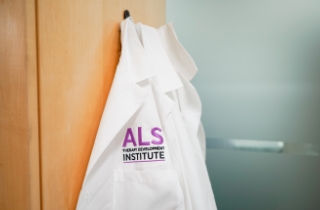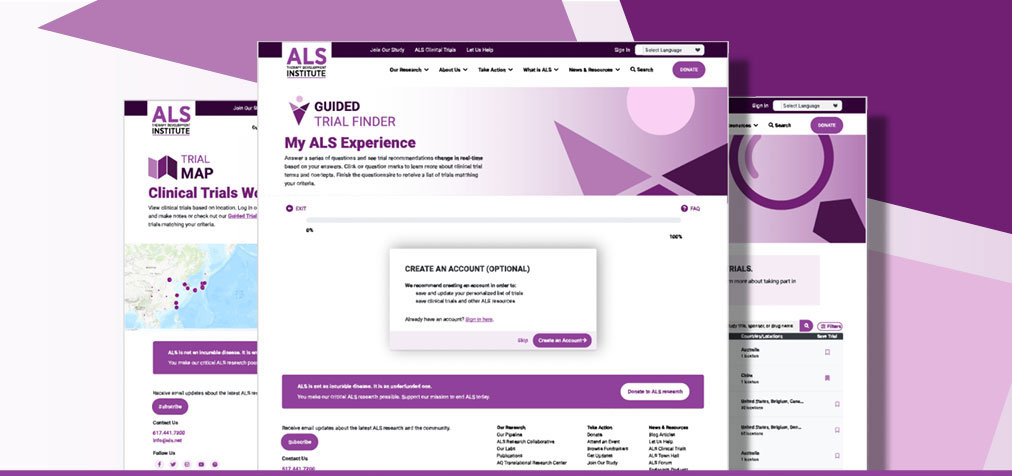For many diseases, keeping track of progression and symptom severity is a relatively straightforward task. For example, an oncologist can look at the size of a tumor, whether it has spread in the body, and many well-established biomarkers to determine the severity of many cancers. A person with diabetes can look at their blood sugar levels. Blood tests that track viral load and immune system function can tell a doctor whether an HIV patient’s disease is worsening or improving.
For a disease like amyotrophic lateral sclerosis (ALS) where there are few known causes and where there are few, if any, consensus biomarkers, on the other hand, measuring disease progression and treatment effects can be a challenge. Clinicians and researchers must rely on the severity of a person’s symptoms as they observe them and as reported by the patient. These observations are inherently subjective, which can be big issue for both medical care and drug research, which both require ways to quantify and compare individuals’ disease severity and progression.
How the ALSFRS-r Works
In order to create a standardized way to track ALS disease progression, researchers have developed a questionnaire, the Revised ALS Functional Rating Scale (ALSFRS-r). Introduced in the mid-1990s, the ALSFRS-r is designed to be filled out by people with ALS, physicians, nurses, and ALS caretakers, at regular intervals. It asks the respondent about the person’s ability to complete 12 different tasks.
The tasks selected for the test are meant to provide a representative picture of the physical abilities most commonly affected by ALS. They include speaking, salivation, swallowing, handwriting, climbing stairs, turning in bed, walking, dressing and hygiene, and three different measures of breathing ability. Each is rated on a scale from zero to four – zero meaning they are incapable of accomplishing the task, and four meaning they can do it with no difficulty. These ratings are then totaled to make one overall score, from zero to 48, mean to represent an overall rating of a person’s physical function.
Observing one’s ALSFRS-r score at regular intervals can help provide people with ALS and their doctors with a quantifiable measure of changes in their physical function – which is closely tied to their disease severity as well as their quality of life. Additionally, as the most widely accepted measure of ALS severity and progression, the ALSFRS-r is relied on by researchers when assessing potential treatments for the disease in clinical trials. Most clinical trials for ALS drugs use the ALSFRS-r as a primary outcome measure – looking for a slowing of the score’s decline over time, or even an increase in points, as a sign that a treatment might be effective.
Limitations of the ALSFRS-r
While it may be the most reliable tool researchers, clinicians, and people with ALS currently have for quantifying the effects of the disease, the ALSFRS-r does have a number of limitations. The test is subjective – it relies on the observer’s assessment of how the disease is affecting a person’s ability to complete the evaluated tasks. While it has been designed to provide as accurate a measure of disease progression as possible – and to make these measurements as consistent as possible from subject to subject – there is no guarantee that any two respondents will rate the same relative progression with the same score. It is even possible that two different clinicians might provide different scores for the same person at the same time.
ALS TDI’s Efforts to Find Alternate Measures of ALS Progression
Because of these limitations, biomarkers that could serve as more objective and sensitive measures of ALS symptom progression are some of the most sought-after advancements by the ALS research community. At the ALS Therapy Development Institute (ALS TDI) we are using our Precision Medicine Program (PMP) to partner with people with ALS all over the world to collect data and to search for potential biomarkers.
These efforts include our first-in-kind In-Home Blood Collection program, which allows PMP participants to contribute regular blood samples by mail without leaving their homes. By studying these samples over time, we aim to identify more potential blood-based biomarkers that could correlate to disease progression. Recently, ALS TDI received a grant from the Department of Defense (DOD) to fund an expansion of this program, along with more advanced sample testing with the potential to reveal new protein biomarkers of ALS.
In addition to using biological samples, PMP researchers are working to use data to track progression. Some participants in the program are provided with digital accelerometers to be worn on the arms and legs to generate movement data and asked to periodically record voice messages to keep track of vocal function. In 2022, ALS TDI and our research partners at Google announced a new, machine learning-powered tool that is able to accurately predict a person’s ALSFRS-r by analyzing these voice recordings.
Today, the ALSFRS-r remains the most widely used and reliable method for tracking ALS. However, with these efforts, ALS TDI aims to discover biological and digital biomarkers that will provide objective and sensitive measures for quantifying disease progression – making ALS care more accurate and Clinical Trials more efficient.
What to Do Next

